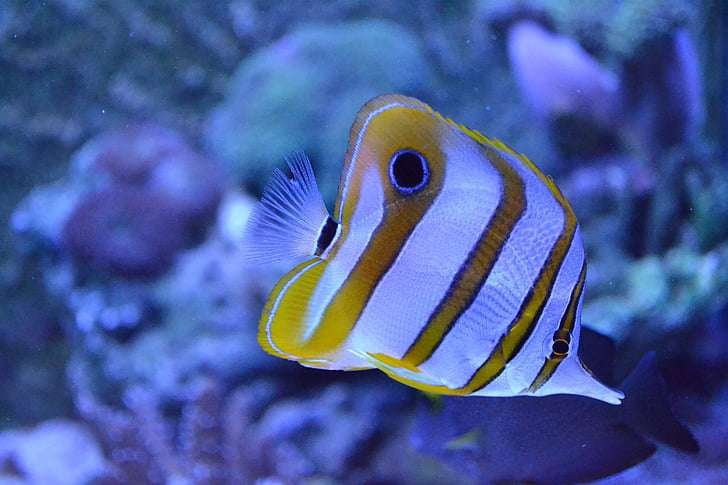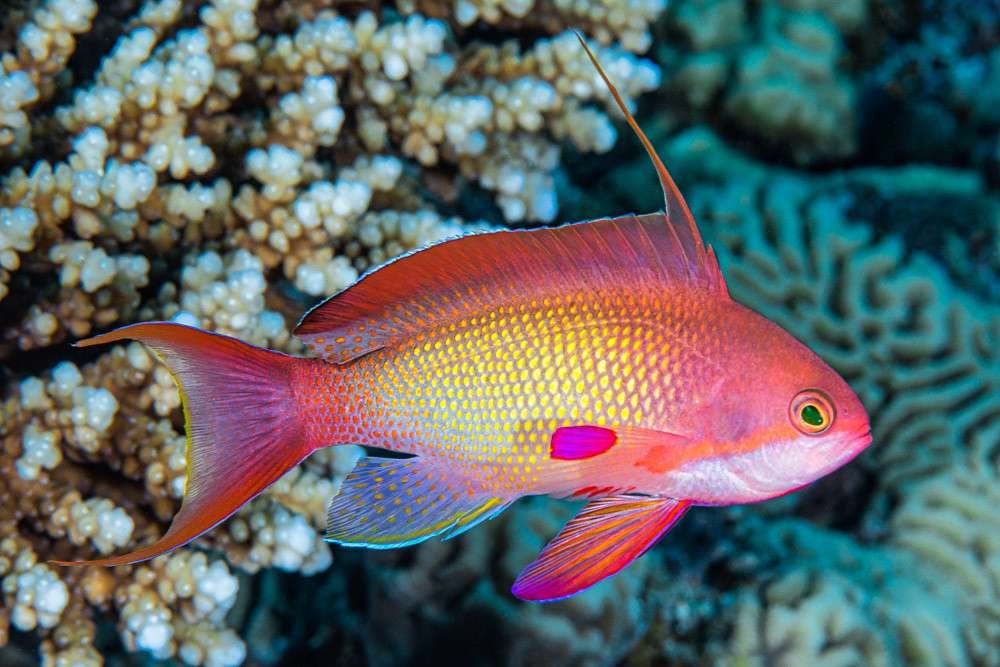Lionfish
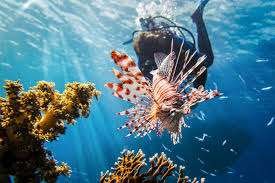
People like to keep lionfish, which are also called zebrafish, firefish, and turkeyfish, in their home tanks. However, they have spread to the U.S. Southeast and the Caribbean, where they are now considered an invasive species. This alien species is bad for reef ecosystems because it fights native species for food and space, especially with snapper and grouper stocks that are already overfished. Some scientists are worried that lionfish could kill off important species, like algae-eating parrotfish, which would let seaweed take over the reefs. Lionfish populations are growing and spreading across the U.S. This is mostly because they don’t have any natural enemies and can reproduce all year; a healthy female can lay up to two million eggs each year.
Lionfish, zebrafish, firefish, turkeyfish, red lionfish, butterfly cod, elegant butterfly-cod, peacock lionfish, red firefish, scorpion volitans, and devil firefish are some of the common names for this fish.
Pterois volitans, or “red lionfish,” and Pterois miles, or “devil firefish,” are their scientific names.
Name: Identification The lionfish’s head and body are marked with brown or maroon lines or bands that are white. Their tentacles are made of flesh and are located above and below their mouths and eyes. Their pectoral fins are shaped like fans, and they have 13 long spines, 10–11 soft rays on the dorsal side, 3 spines on the anal side, and 6–7 soft rays on the anal side. Lionfish can get as big as 18 inches as adults, but young ones can be as little as 1 inch. Their scales are cycloid, which means they are oval or circular and have a smooth edge.
Range of origin
The lionfish lives in a large area that includes western Australia, Malaysia, French Polynesia, and the Pitcairn Islands in the UK. Its home range is in the South Pacific and Indian Oceans. In the south, it lives on Lord Howe Island off the east coast of Australia and the Kermadec Islands in New Zealand. In the north, it lives in southern Japan and southern Korea. In addition, the species is common all over Micronesia.
Range not native
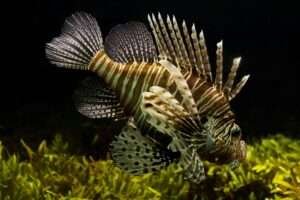
From Florida to North Carolina, lionfish have been seen off the coast of the southeastern United States. Lionfish juveniles have also been found in the water near Bermuda, Long Island, and New York. Lionfish are commonly kept as aquarium fish, and they may have been put into the Atlantic on purpose. The first lionfish was seen in South Florida waters in 1985, and more were seen until they were officially recognized as a species in the early 2000s.
Home Area: Lionfish live in a lot of different types of marine environments in warm tropical seas. They can be found on hard bottoms from 1 to 300 feet deep, in marshes, seagrass beds, coral reefs, and even man-made reefs like shipwrecks.It is common for lionfish to live in all types of warm ocean habitats in the tropics. Lionfish have been seen in water up to 300 feet deep, on hard bottoms, mangroves, seagrass, coral, and man-made islands (like shipwrecks).
Role in Ecology
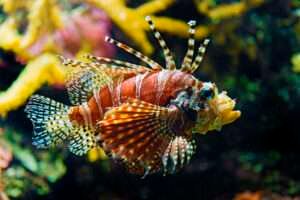
Lionfish move slowly and stand out because of their bright colors and large fins, which scare away possible predators. They eat more than 50 different kinds of fish, some of which are economically and biologically important. This makes them one of the most important predators in many Atlantic coral reefs. Lionfish are active hunters that use their fan-shaped pectoral fins to slowly go after their food and “corner” it.
Animal Behavior: Lionfish are thought to hunt at night, but during the day in the Atlantic, they have been seen with full bellies. The soft rays on their dorsal and anal fins move slowly back and forth. They sometimes hide in cracks and ledges in the rocks and reefs during the day. Lone lionfish or small groups of lionfish can often be seen moving around during the day in the Atlantic.
Important Safety Measures
This species’ spines have a poisonous sting that can be very painful, make you sweat, make it hard to breathe, and even paralyze you. Lionfish spines have two grooves where venom glands are found. Acetylcholine (pronounced “ah-see-toe-coe’-lean”) is a neurotransmitter that is made up of protein and a muscle toxin. When the spine pokes a hole in the skin, the venom from the venom glands inside the spine’s grooves goes into the cut. If a lionfish stings you, you should see a doctor right away.

